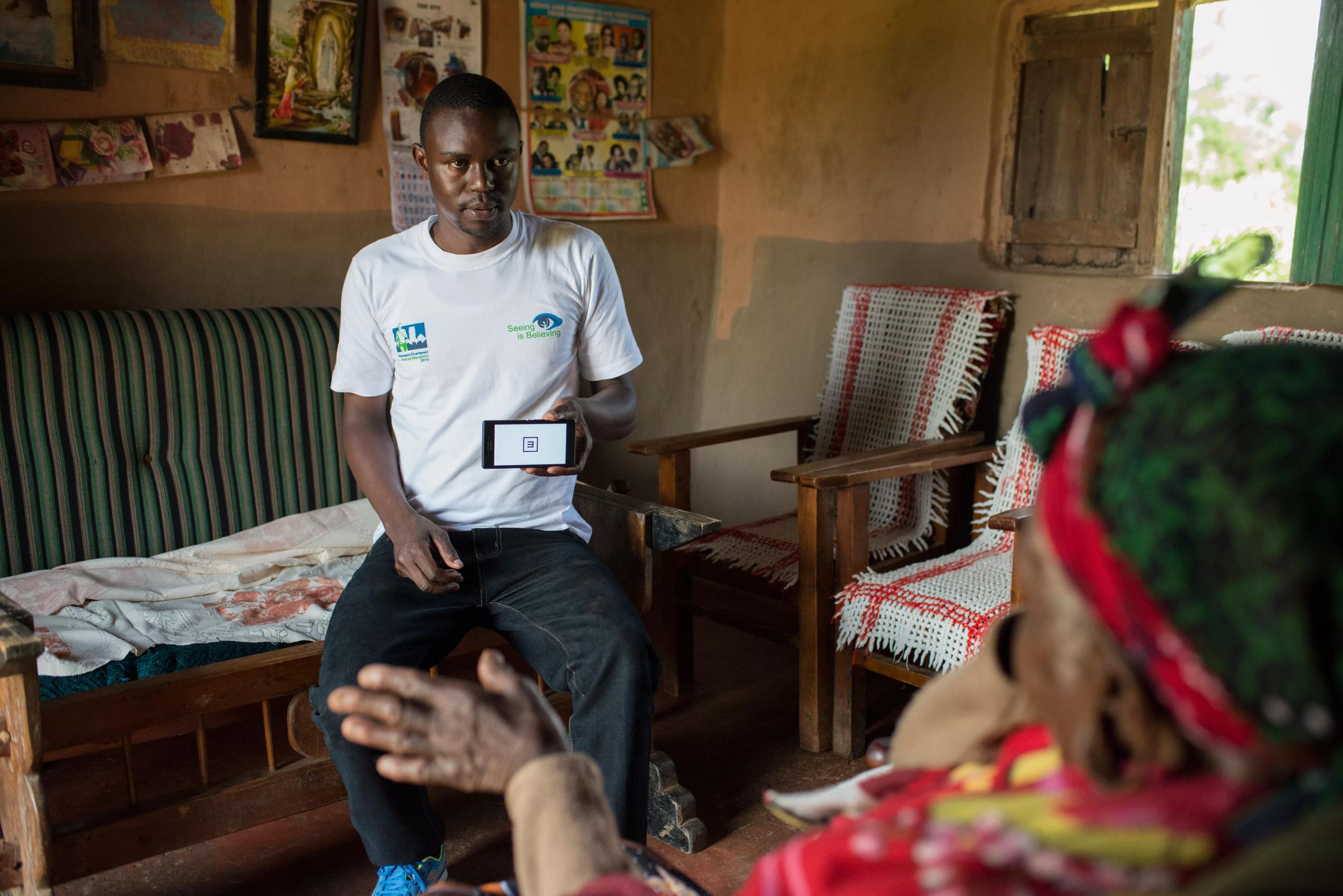Publication
- Published in The Lancet Digital Health, 2021.
Background
This randomised controlled trial in Trans Nzoia County, Kenya, compared a community eye health programme powered by Peek to a conventional programme. This trial included more than 128,000 people. 36 community unit clusters (defined as a health centre and its catchment population) were assigned at random to receive either the Peek community eye health system (intervention group) or the standard approach of health-centre based outreach clinics (control group).
What did the results show?
- Increased access to care: With Peek, almost three times the number of people with eye problems were connected to care compared to conventional programmes.
The average attendance rate at triage assessment (primary care) by participants with eye problems was 1429 per 10000 participants in the intervention group, compared with 522 per 10000 in the control group. The average hospital attendance rate for those with eye problems was also greater (82 per 10000 in the intervention group compared with 33 per 10000 in the control group). - Better use of limited services: With Peek, the proportion of people attending hospital for eye problems that could have been treated at the primary care level reduced from 61% to 17%,while the proportion being treated at hospital for more complex conditions rose from 8% to 63%.
- More equitable access to care: There was an increase in uptake of services across all ages and more so in women than men, indicating the potential of the technology to support sex and age equity in eye health (previous studies found that secondary services were less utilised by young people and women).
- Improved efficiency of human resources: The study confirmed that non-specialist community volunteers can play a key role in eye health programmes by accurately identifying and referring people to care using Peek, freeing up capacity among specialist services.
My experience as one of very few eye doctors in this rural region of Kenya has shown me that we need more innovative ways to get eye care services to the many people who require them. Our findings show the great potential of using this technology to maximise limited health resources.”
Dr Hillary Rono
Study lead author and Peek researcher
Collaborators
- Peek Vision
- International Centre for Eye Health at the London School of Hygiene & Tropical Medicine
- Kitale County Hospital
- University of Nairobi
Funding
The trial was funded by The Queen Elizabeth Diamond Jubilee Trust.
